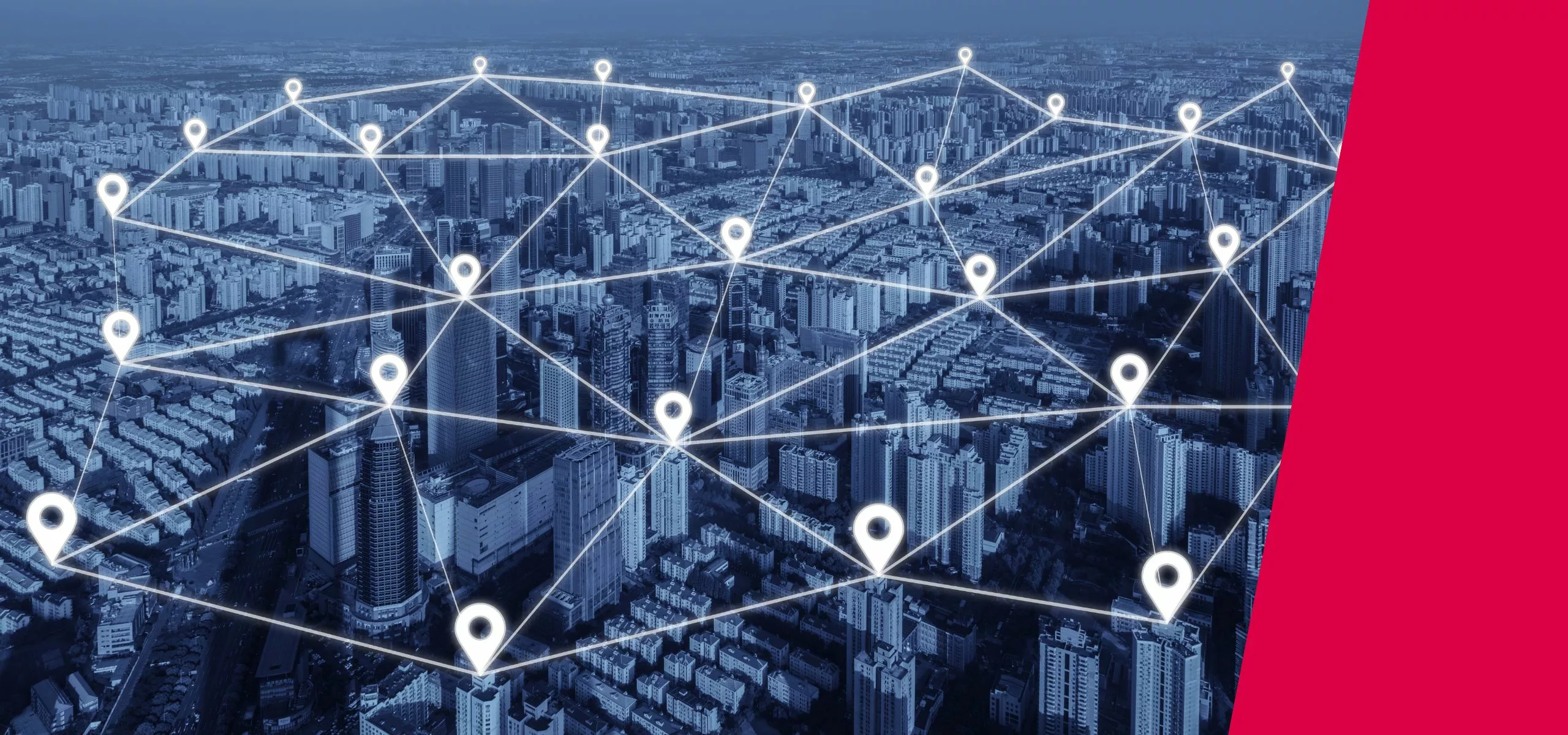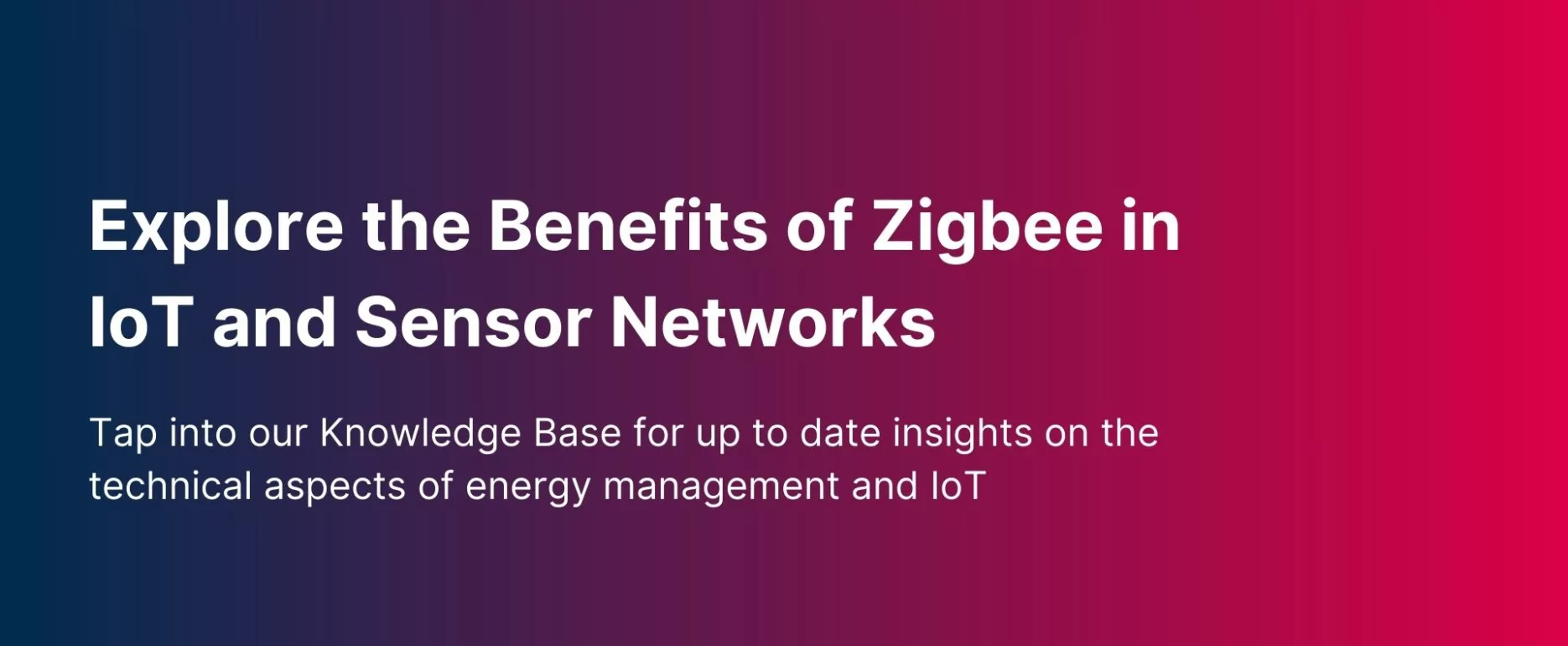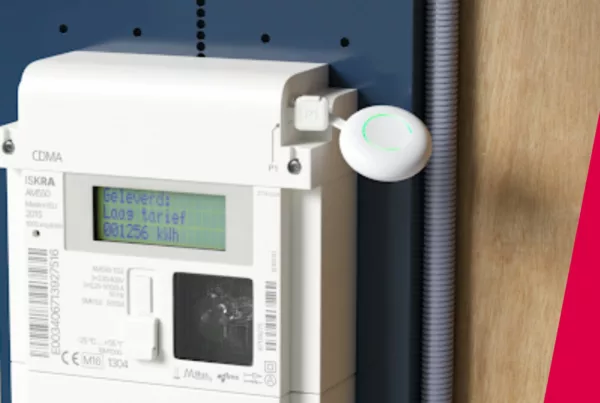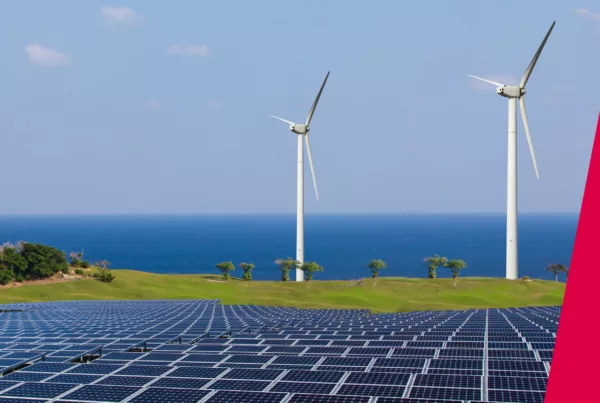Comparing Low-Power Mesh Networking Protocols: Why EpiSensor chooses Zigbee
Within Internet of Things (IoT) and wireless sensor networks, low-power mesh networking protocols play a crucial role in enabling efficient and reliable communication between devices.
This article provides a technical comparison of four prominent protocols: Zigbee, Thread, Z-Wave, and Bluetooth Mesh, with a particular focus on EpiSensor’s implementation of Zigbee for energy monitoring and management solutions. Read on as we examine the merits of each, covering network architecture and topology, security features, power consumption and range, and more.
Prominent Networking Protocols Explained
Zigbee
Zigbee is based on the IEEE 802.15.4 standard and operates in the 2.4 GHz, 915 MHz, and 868 MHz frequency bands. It utilises a mesh network topology and supports up to 65,000 nodes per network.
Thread
Thread is an IPv6-based protocol that also builds on IEEE 802.15.4. It operates exclusively in the 2.4 GHz band and supports up to 250 nodes per network.
Z-Wave
Z-Wave is a proprietary protocol operating in sub-1GHz frequency bands (e.g., 908.42 MHz in the US). It supports up to 232 nodes per network.
Bluetooth Mesh
Bluetooth Mesh is based on Bluetooth Low Energy (BLE) and operates in the 2.4 GHz band. It can theoretically support up to 32,767 nodes per network.
Merits and Challenges
Network Architecture and Topology
Zigbee
Zigbee employs a mesh network topology with three device types:
- Coordinator: One per network, initiates network formation and can bridge to other networks.
- Router: Relays messages and can join existing networks or start their own.
- End Device: Can only communicate with routers or coordinators, allowing for sleep modes to conserve power.
Thread
Thread uses a similar mesh topology but with different device classifications:
- Border Router: Connects the Thread network to other IP-based networks.
- Router: Similar to Zigbee routers.
- End Device: Can be either Full Thread Device (FTD) or Minimal Thread Device (MTD).
- Leader: Manages router ID assignment and network data registration.
Z-Wave
Z-Wave uses a source-routed mesh network topology with two main device types:
- Controllers: Manage the network and control other devices.
- Slaves: End devices that can repeat signals but cannot initiate communication.
Bluetooth Mesh
Bluetooth Mesh uses a managed flood mesh topology where all devices can relay messages. It defines several roles:
- Relay: Retransmits received messages.
- Proxy: Interfaces between Bluetooth Mesh and BLE devices.
- Friend: Stores messages for low-power nodes.
- Low Power: Energy-constrained devices that associate with a Friend node.

Security Features by Protocol
Zigbee
- Uses 128-bit AES encryption
- Implements network and application layer security
- Provides three security keys: Network, Link, and Application
- Supports centralised Trust Center for key management
Thread
- Utilises DTLS for end-to-end encryption
- Implements network-wide key, device-specific keys
- Uses AES-CCM (Counter with CBC-MAC) for authentication and encryption
Z-Wave
- Implements S2 security framework with AES-128 encryption
- Uses elliptic curve Diffie-Hellman (ECDH) for key exchange
- Provides unique keys for each node-to-node communication
Bluetooth Mesh
- Uses AES-CCM encryption
- Implements three layers of security: Network, Application, and Device
- Provides separation of concerns with different keys for various operations
Confused about what protocol is best for your next energy management programme?
Tap into our expertise on a brief call
Physical Layer and Data Rates
Protocol
Frequency Bands
Data Rates
Zigbee
2.4 GHz: 16 channels
2.4 GHz: 250 kbps<br>915 MHz: 40 kbps<br>868 MHz: 20 kbps
Thread
2.4 GHz: 16 channels<br>915 MHz: 10 channels<br>868 MHz: 1 channel
250 kbps
Z-Wave
908.42 MHz (US)<br>868.42 MHz (Europe)<br>Other regional frequencies
9.6/40/100 kbps
Bluetooth Mesh
2.4 GHz: 40 channels
1 Mbps (BT 4.0) or 2 Mbps (BT 5.0)
Power Consumption and Range
Protocol
Typical TX Power
Sleep Current
Range
Zigbee
1-100mW
< 1 µA
10-100 m (up to 1 km with power amplification)
Thread
1-100 mW
< 1 µA
30-100m
Z-Wave
1-10 mW
< 1 µA
Up to 200 m
Bluetooth Mesh
1-10 mW
< 1 µA
Up to 200 m
Note: Actual power consumption and range can vary significantly based on specific implementations, environmental factors, and device configurations.
Why EpiSensor chooses Zigbee
EpiSensor has chosen Zigbee as its primary mesh networking protocol for several technical reasons:
1. Protocol Maturity and Stability
Zigbee has been in active development and use since 2003, providing a robust and well-tested protocol stack.
This maturity translates to:
- Well-documented behaviours and edge cases.
- Extensive real-world testing across various environments.
- Established best practices for implementation and troubleshooting.
2. Extensive Device Ecosystem
The Zigbee Alliance (now Connectivity Standards Alliance) has over 400 member companies, contributing to a vast ecosystem of compatible devices.
This provides:
- A wide selection of certified Zigbee chips and modules.
- Interoperability with third-party sensors and actuators.
- Reduced development time through use of pre-certified. components
3. Community and Software Support
The large Zigbee community offers significant advantages:
- Open-source implementations and development tools.
- Regular protocol updates and improvements.
- Extensive knowledge base for troubleshooting and optimisation.
4. Balanced Performance
Zigbee offers a good balance of data rate, range, and power consumption:
- 250 kbps data rate is sufficient for energy management and demand response applications, allowing data streaming at up to 1-second intervals.
- Mesh topology extends effective range.
- Low power consumption enables long battery life.
Enhancing Zigbee’s Reliability through Customisation
EpiSensor has implemented several features to enhance Zigbee’s reliability:
1. Precise Timestamping
- Implements a time synchronisation algorithm on the Zigbee network similar to NTP.
- Timestamps are applied as close to the sensing event as possible to minimise latency-induced errors.
2. Optimised Data Transmission
- Developed a very efficient sensor data transmission protocol
- Allows transfer of high-resolution data using the minimum number of Zigbee packets.
3. Intelligent Node Behaviour
- Nodes have enough intelligence to sample and timestamp data locally.
- Nodes publish data messages to EpiSensor’s powerful API-enabled Gateway without needing to be polled.
4. Reliable Data Transfer
- Data messages sent to the Gateway are fully acknowledged
- The gateway sends back an acknowledgement message to the node, confirming data persistence.
- If the acknowledgment isn’t received in time, the message is resent or stored in local flash memory for later transmission.
Technical Implementation Details
Zigbee Stack Configuration
EpiSensor devices use Zigbee 3.0 (as of 2024) with backward compatibility for Zigbee Pro networks.
Range and Coverage
- EpiSensor nodes include power amplified Zigbee modules that can achieve ranges up to 1km.
- Full utilisation of the power amplifier is region-dependent
- Based on extensive testing, each powered Zigbee device provides coverage for approximately 1000m² of industrial/commercial site area.
Power Management
- Zigbee Routers and Coordinators need to be powered.
- End Devices can be battery-powered.
- EpiSensor battery-powered nodes can achieve battery lifetimes of up to 10 years.
Advance your next Energy Management Programme with EpiSensor’s Zigbee-Based Solutions
EpiSensor’s choice of Zigbee, enhanced with custom features, offers a robust solution for industrial and commercial energy monitoring. With Zigbee’s mature ecosystem and EpiSensor’s added reliability measures, our systems ensure accurate and dependable data transmission. This highly accurate and reliable data will empower you to drive better decisions, reduce energy costs, boost sustainability efforts, and improve operational efficiency. Furthermore, EpiSensor’s energy monitoring devices are easy to install, use, and integrate, without the need to hire specialists. Trusted by market leaders like Veolia, EnergyCAP, and CoolPlanet, EpiSensor delivers unmatched IoT solutions for energy management programmes.
Working on Energy Management programmes and need reliable, easy-to-install IoT infrastructure that delivers?
Discover EpiSensor’s award-winning solutions today!




